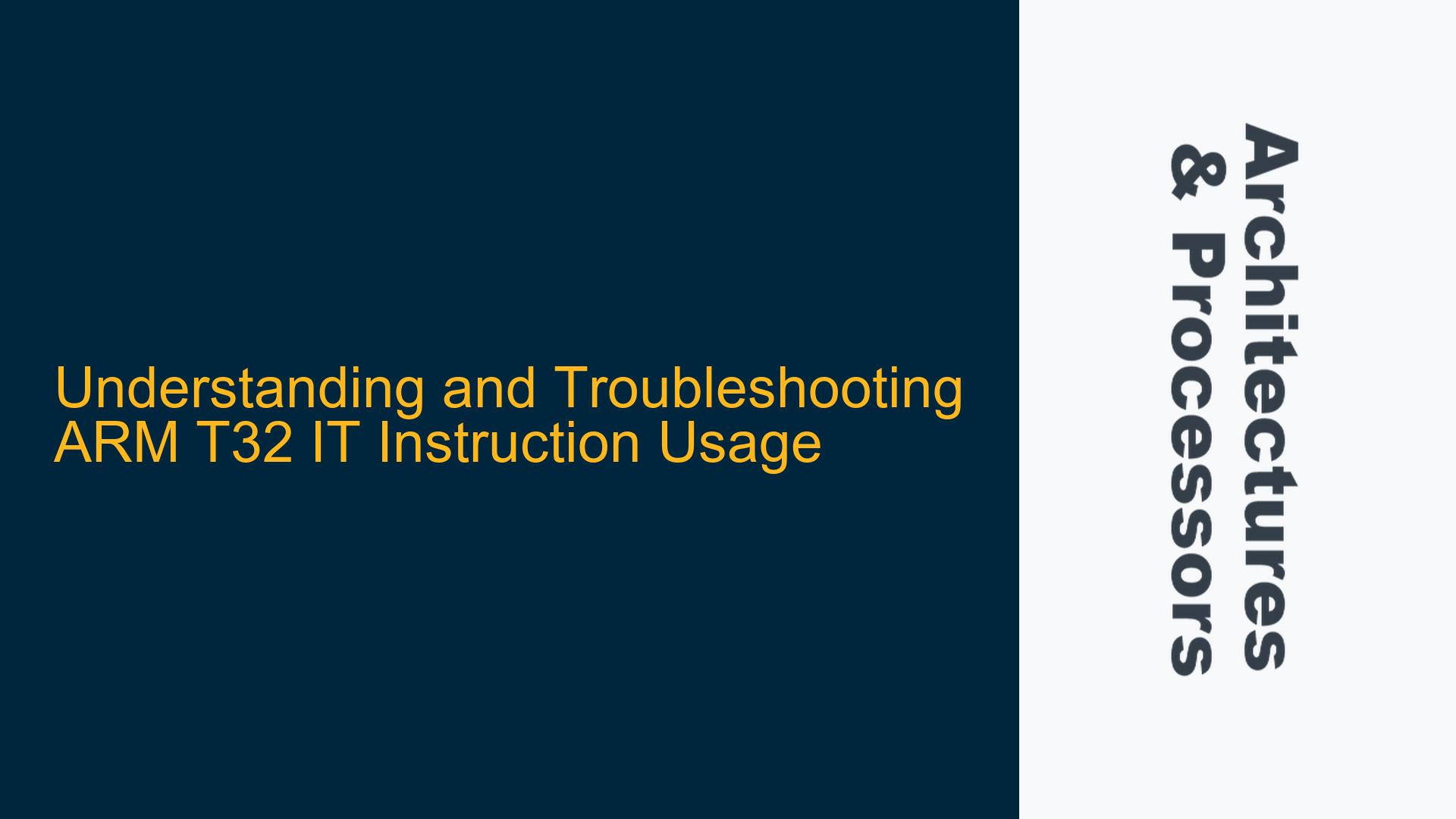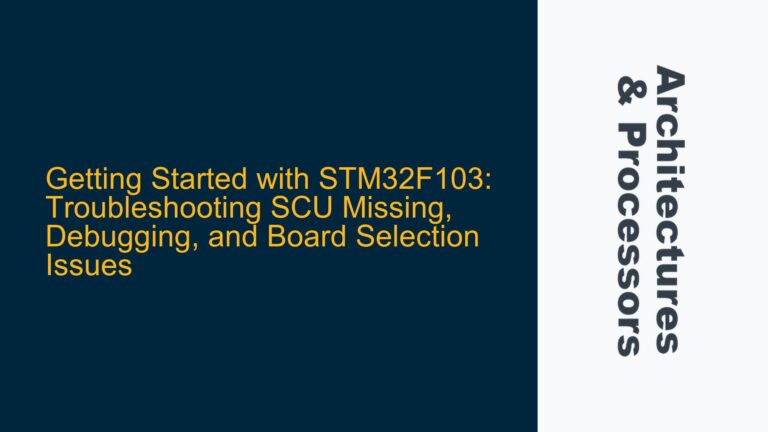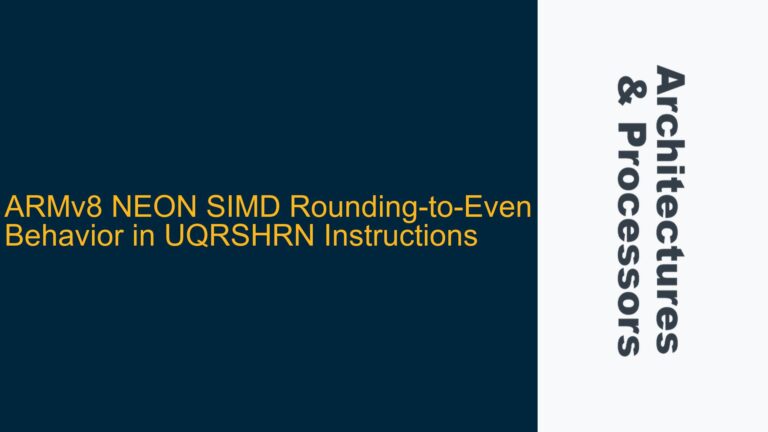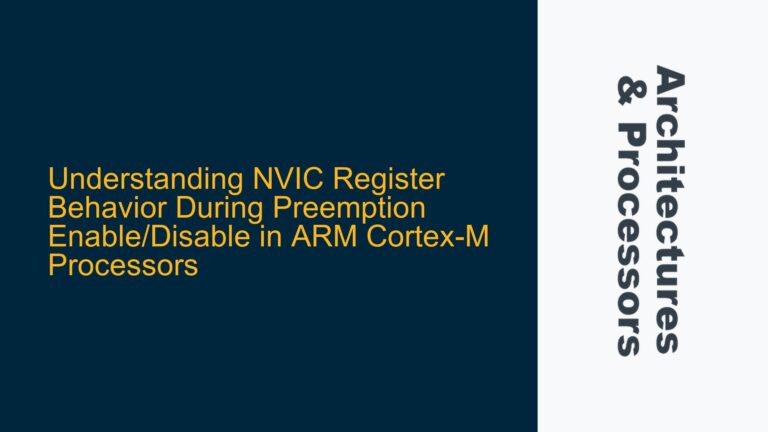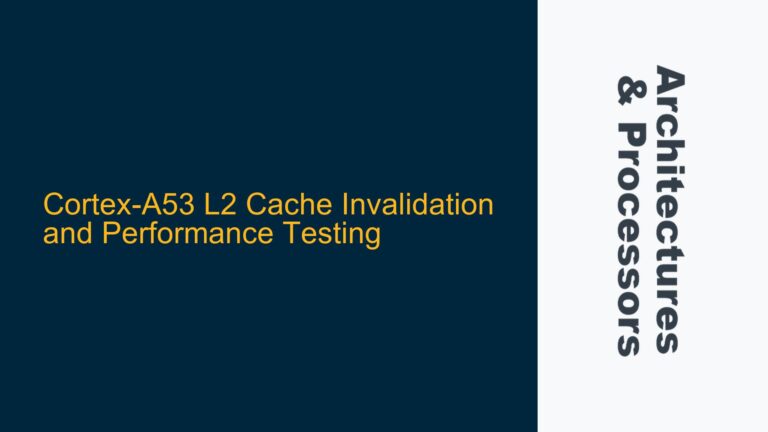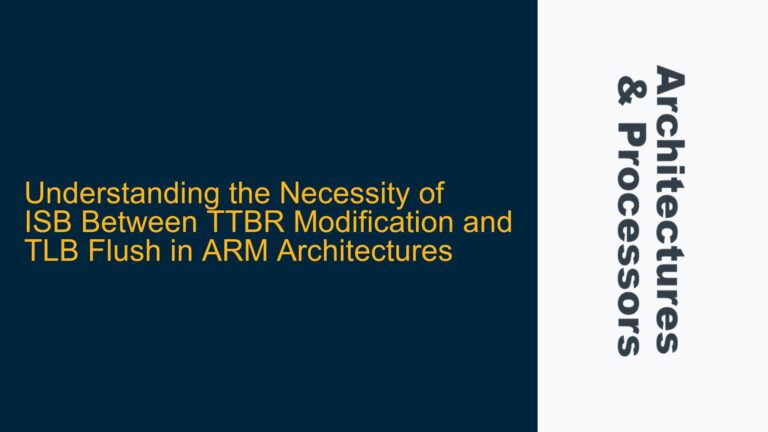ARM T32 IT Instruction: Purpose and Common Misunderstandings
The ARM T32 (Thumb-2) instruction set includes the IT (If-Then) instruction, which is a powerful yet often misunderstood feature. The IT instruction is used to conditionally execute up to four subsequent instructions based on the state of the ARM condition flags. This capability is particularly useful in Thumb-2 mode, where the instruction set is more compact compared to ARM mode, and conditional execution is not as straightforward as in ARM mode.
The IT instruction works by specifying a condition and a mask that determines which of the following instructions are executed conditionally. The condition is based on the ARM condition codes (e.g., EQ, NE, GT, LT), and the mask specifies which instructions are affected. For example, an IT instruction with the condition "EQ" and a mask of "TTT" would conditionally execute the next three instructions if the Zero flag (Z) is set.
Despite its utility, the IT instruction can be a source of confusion for developers, especially those new to ARM assembly or transitioning from ARM mode to Thumb-2 mode. Common misunderstandings include incorrect usage of the condition mask, improper handling of the condition flags, and confusion about the scope of the IT block. These issues can lead to subtle bugs in the code, such as incorrect conditional execution or unexpected behavior when the condition flags are modified within the IT block.
Incorrect Condition Mask Usage and Flag Handling
One of the most common causes of issues with the IT instruction is the incorrect usage of the condition mask. The mask specifies which of the following instructions are executed conditionally, and it must match the number of instructions that follow the IT instruction. For example, if the mask is "TTT", then exactly three instructions must follow the IT instruction, and all three will be executed conditionally based on the specified condition.
Another common issue is improper handling of the condition flags. The IT instruction relies on the state of the condition flags (N, Z, C, V) in the APSR (Application Program Status Register) to determine whether the conditional instructions should be executed. If the condition flags are modified within the IT block, this can lead to unexpected behavior. For example, if a comparison instruction (e.g., CMP) is used within the IT block, it will modify the condition flags, potentially altering the outcome of the conditional execution.
Additionally, developers may mistakenly assume that the IT instruction can be used to conditionally execute any number of instructions. However, the IT instruction can only conditionally execute up to four instructions, and the condition mask must accurately reflect the number of instructions that follow. Attempting to conditionally execute more than four instructions or using an incorrect mask can result in assembly errors or runtime bugs.
Proper Implementation and Debugging of IT Instruction Blocks
To properly implement and debug IT instruction blocks, developers should follow a systematic approach that includes careful planning of the condition mask, proper handling of the condition flags, and thorough testing of the conditional execution logic.
First, when using the IT instruction, it is crucial to carefully plan the condition mask to ensure that it matches the number of instructions that follow. The mask should be chosen based on the number of instructions that need to be executed conditionally, and it should accurately reflect the desired behavior. For example, if only two instructions need to be executed conditionally, the mask should be "TT", and only two instructions should follow the IT instruction.
Second, developers should ensure that the condition flags are not modified within the IT block unless absolutely necessary. If the condition flags must be modified, care should be taken to ensure that the modifications do not affect the outcome of the conditional execution. This may involve saving and restoring the condition flags or restructuring the code to avoid modifying the flags within the IT block.
Third, thorough testing is essential to ensure that the IT instruction is functioning as expected. This includes testing all possible conditions and ensuring that the conditional execution logic behaves correctly under all scenarios. Debugging tools such as simulators or debuggers can be used to step through the code and verify the state of the condition flags and the execution of the conditional instructions.
In addition to these steps, developers should also be aware of the limitations of the IT instruction. For example, the IT instruction cannot be used to conditionally execute more than four instructions, and it cannot be used to conditionally execute instructions that modify the PC (Program Counter) or the condition flags. If more complex conditional logic is required, developers may need to use alternative approaches, such as branching or using multiple IT blocks.
By following these guidelines, developers can effectively use the IT instruction to implement conditional execution in ARM T32 code, while avoiding common pitfalls and ensuring reliable and efficient operation.
Advanced Techniques and Best Practices for IT Instruction Usage
Beyond the basic usage of the IT instruction, there are several advanced techniques and best practices that can help developers get the most out of this powerful feature. These techniques include optimizing the use of IT blocks for performance, leveraging the IT instruction in conjunction with other Thumb-2 features, and understanding the interaction between the IT instruction and the ARM architecture.
One advanced technique is to optimize the use of IT blocks for performance. Since the IT instruction allows for conditional execution without branching, it can be used to reduce the number of branch instructions in the code, which can improve performance by reducing branch penalties. However, this optimization must be balanced against the complexity of the code and the potential for increased code size. Developers should carefully analyze the performance impact of using IT blocks and consider using them in performance-critical sections of the code.
Another advanced technique is to leverage the IT instruction in conjunction with other Thumb-2 features, such as the CBZ (Compare and Branch on Zero) and CBNZ (Compare and Branch on Non-Zero) instructions. These instructions can be used to simplify conditional logic and reduce the need for IT blocks in some cases. For example, if a conditional block of code only needs to execute if a register is zero, the CBZ instruction can be used to branch around the code, eliminating the need for an IT block.
Finally, developers should understand the interaction between the IT instruction and the ARM architecture, particularly in relation to the condition flags and the APSR. The IT instruction relies on the condition flags to determine whether the conditional instructions should be executed, and any modification to the condition flags within the IT block can affect the outcome of the conditional execution. Developers should be aware of how different instructions affect the condition flags and ensure that the condition flags are not inadvertently modified within the IT block.
By mastering these advanced techniques and best practices, developers can use the IT instruction to its full potential, creating efficient and reliable ARM T32 code that takes full advantage of the Thumb-2 instruction set.
Common Pitfalls and How to Avoid Them
While the IT instruction is a powerful tool, it is not without its pitfalls. Common issues include incorrect usage of the condition mask, improper handling of the condition flags, and misunderstanding the scope of the IT block. These issues can lead to subtle bugs in the code, such as incorrect conditional execution or unexpected behavior when the condition flags are modified within the IT block.
One common pitfall is the incorrect usage of the condition mask. The mask specifies which of the following instructions are executed conditionally, and it must match the number of instructions that follow the IT instruction. For example, if the mask is "TTT", then exactly three instructions must follow the IT instruction, and all three will be executed conditionally based on the specified condition. If the mask does not match the number of instructions, the assembler will generate an error, or the code may behave unexpectedly at runtime.
Another common pitfall is improper handling of the condition flags. The IT instruction relies on the state of the condition flags (N, Z, C, V) in the APSR to determine whether the conditional instructions should be executed. If the condition flags are modified within the IT block, this can lead to unexpected behavior. For example, if a comparison instruction (e.g., CMP) is used within the IT block, it will modify the condition flags, potentially altering the outcome of the conditional execution.
To avoid these pitfalls, developers should carefully plan the condition mask and ensure that it matches the number of instructions that follow. They should also ensure that the condition flags are not modified within the IT block unless absolutely necessary. If the condition flags must be modified, care should be taken to ensure that the modifications do not affect the outcome of the conditional execution.
Additionally, developers should be aware of the limitations of the IT instruction. For example, the IT instruction cannot be used to conditionally execute more than four instructions, and it cannot be used to conditionally execute instructions that modify the PC or the condition flags. If more complex conditional logic is required, developers may need to use alternative approaches, such as branching or using multiple IT blocks.
By understanding these common pitfalls and taking steps to avoid them, developers can use the IT instruction effectively and avoid subtle bugs in their ARM T32 code.
Conclusion
The ARM T32 IT instruction is a powerful feature that allows for conditional execution of instructions in Thumb-2 mode. However, it can be a source of confusion and subtle bugs if not used correctly. By understanding the purpose and proper usage of the IT instruction, developers can avoid common pitfalls and create efficient and reliable ARM T32 code.
Key takeaways include careful planning of the condition mask, proper handling of the condition flags, and thorough testing of the conditional execution logic. Advanced techniques, such as optimizing IT blocks for performance and leveraging other Thumb-2 features, can further enhance the effectiveness of the IT instruction. By following these guidelines and best practices, developers can master the IT instruction and take full advantage of the Thumb-2 instruction set in their ARM-based embedded systems.
